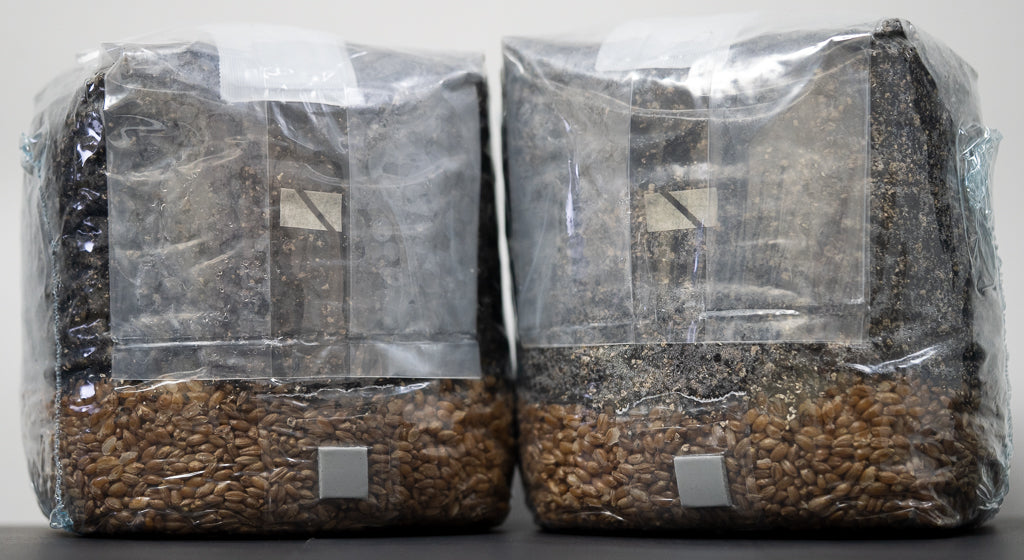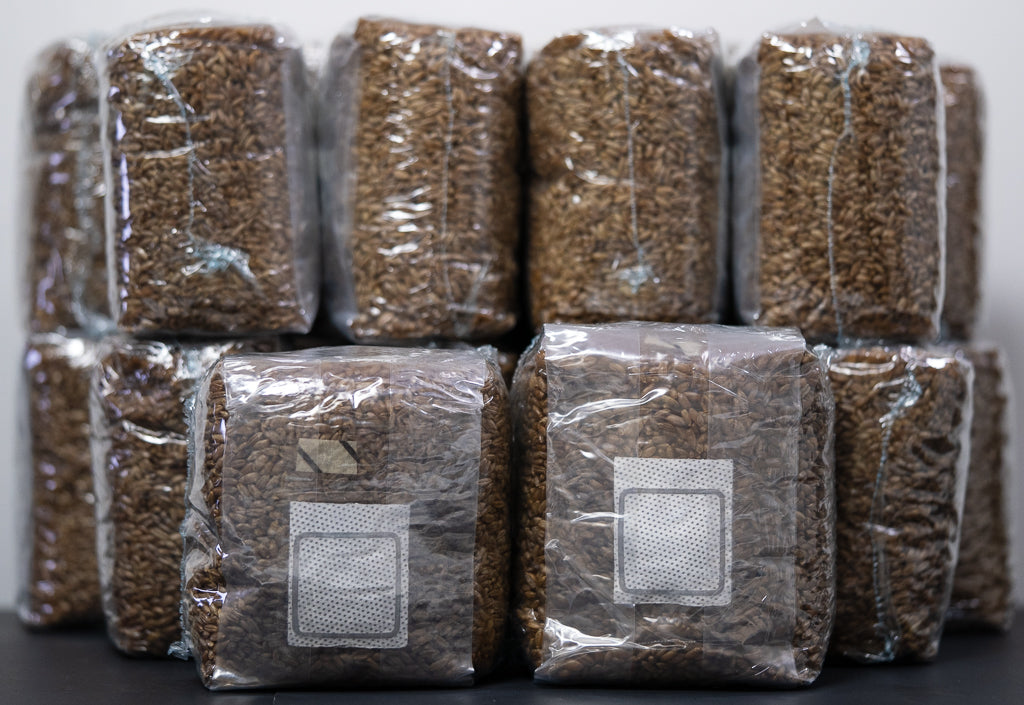Maitake Grifola frondosa Hen of the Woods, Ram’s Head, Sheep’s Head
Maitake
Grifola frondosa
Alias: Hen of the Woods, Ram’s Head, Sheep’s Head, and in Japanese, it means “dancing mushroom”;
Incubation Temperature: 73-75 degrees
Fruiting Temperature: 55-82 degrees
Spore Print Color: White
Identification: Hen of the woods are polypores and do not have gills, releasing their spores through pores. Oaks are the most preferred wood for hen of the woods, though they will appear under maple and elms. The hen of the woods loves the base of trees that are living. They prefer healthy trees over ones with sickness. Since they are weak parasites, the Maitake has the opportunity to fruit for many years in the right environment. So remember where you find them! Young caps, called fronds, begin darker and fade to shades of grey and yellow as they age. These fronds layer and are shaped like spoons that rosette from a tubular mass underground. Maitake can weigh up to 50 pounds, with tales of clusters weighing as much as 100 pounds.
Colorization within the species varies from pale grey to brown. The concentric coloring of the fronds may not always be apparent. Each frond is 1-6 inches and fan out with wavy edges as they grow. The spores start light grey and turn white. The interior is white and firm. Hen of the Woods is non-bruising and does not change color when sliced. Maitakes grow in the Northeastern United States, Eastern Canada, and parts of Japan, China, and Europe from late summer into fall.
Poisonous Fakes: Chicken of the Woods is often confused with Maitake only in name, not appearance. Hen of Woods is brown, and Chicken of the Woods is orange. Meripilus sumstinei, aka the black staining fungus, is a look-alike with a similar taste as the hens, just a bit more rubbery. The black staining polypores bruise black along the edge and when handled. Their coloring is brownish in shade, with the bruising a good indicator for identification.
Growing Outdoors:
Like Shiitake, Maitake takes well to outdoor environments and grows on logs. You will want to be mindful that Maitake mycelium is a slow grower. Incubation can take three months, with first fruiting taking up to 18 months. Like Shiitake, the process requires all the hard work up front for years of mushroom enjoyment. Since Maitake is a butt rot fungus, you want to bury your inoculated cut oak under an inch of soil. Starting this process in the spring before warmer temperatures arrive for the summer is ideal, expecting the first good harvest in the fall after next. You can also use sawdust, wood chips, and any other oak wood product to establish Maitake in the garden bed. Accomplish this by incubating your liquid culture in our 4-pound sterilized rye grain bags and transferring it to a prepared area in your garden with cut oak. Since Maitake is a weak parasite, you want to use fresh-cut oak in your outdoor mushroom garden, sterilizing your cuts if possible. Maitake needs a steady oxygen supply during every step in its life cycle. Take this into account when covering your spawn. Use something loose, like hay or unpacked soil. Like Shiitake, growing outdoors will give the best long-term yields and a cold cycle is needed.
Growing Indoors:
Since Maitakes are slow-growing naturally, it opens them up to contamination situations. Be wary of this if you are using tubs to fruit your Maitake. You can grow at home in an All in One Kit mushroom grow bag, keeping in mind the 3-4 month-long growth cycle. The initial incubation period can take up to 3 months. You will want to set up a location that will receive a consistent temperature of about 73-75 degrees. Maitake are more forgiving in the temperature department, but lacking humidity and oxygen, they are not. Take care that the filter patch is up, exposed to open air, and your bag has moisture, as hens tend to dry out. Having patience with this process is suggested. Maitake is considered intermediate in difficulty to grow, so having prior experience with another mushroom, like oysters, is wise. Understanding the growth cycles of mushrooms before beginning to manipulate their environment to mimic wild/outdoor conditions needed is good practice. Maitake are picky and do need that extra care indoors. They will require cold to begin to fruit, so once your sterilized mushroom compost colonizes, let it sit in a refrigerator for 24-48 hours, starting the fruiting process. Allow the pins to form before transferring into a tub to fruit, or open your bag to allow oxygen in. If living in a drier climate, you may need to mist your bags throughout the grow cycle. Picking up a still box is a good idea to tackle hens indoors. You will need to open and close the bag a few times.
Mainly oak, Maitake is picky. Sawdust, shredded, chunked, or log, it does not matter. A blend of oak, elm, and maple will start things in the right direction indoors or outdoors. They take well on sterilized rye grain or sawdust to develop mycelium.


